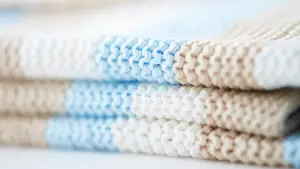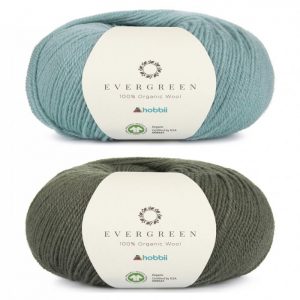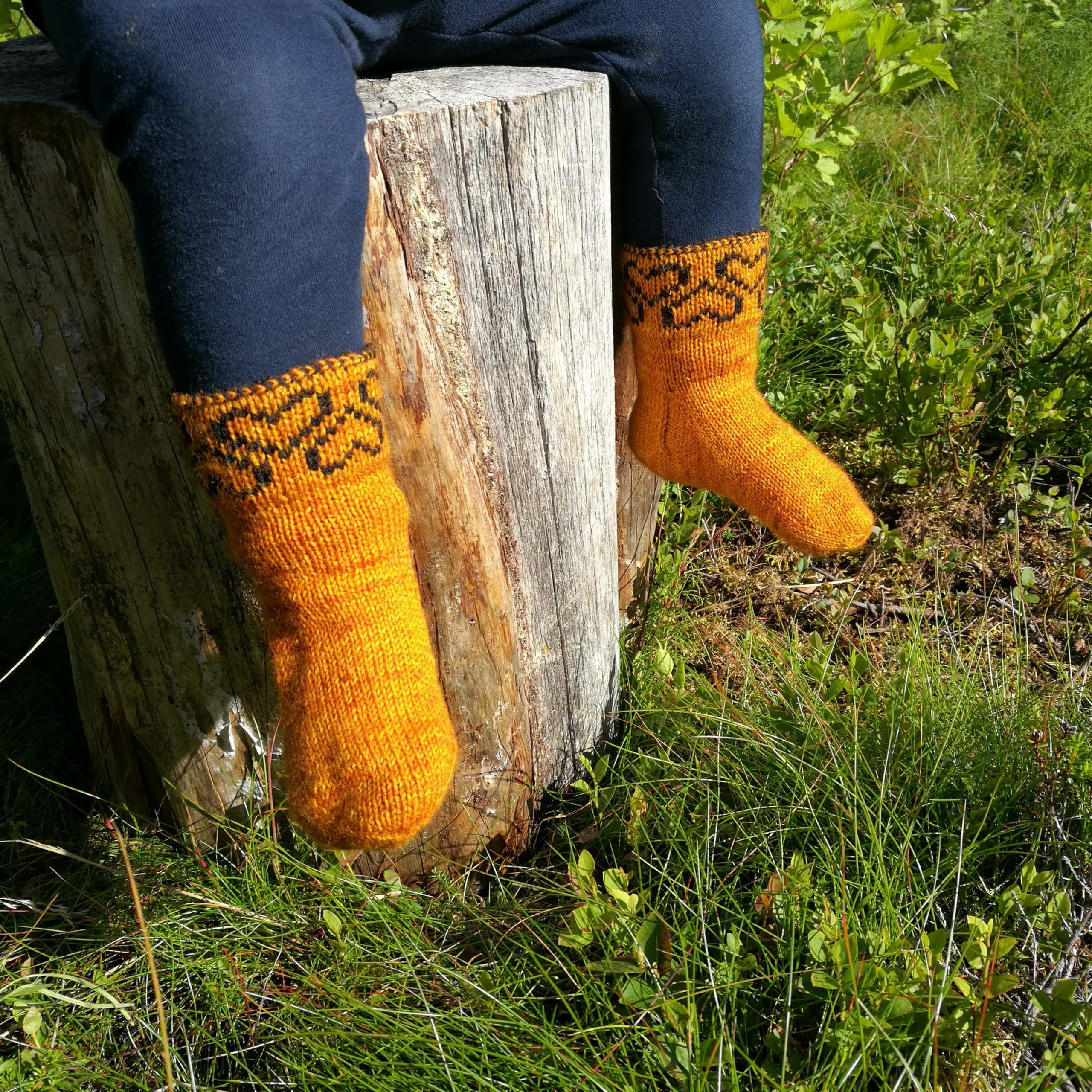This post contains affiliate links. If you use these links to buy something I may earn a small commission. Clicking an affiliate link does NOT result in any additional cost to you, and the affiliate money I earn helps pay the fees to keep this site up and running – thanks for your support! You can read the full disclaimer here.
The regular bind-off is the first method many of us have learned and for long it was the only one I used. Then I made my first pair of toe-up socks and the edge was just way too tight and I couldn’t pull the sock over my heel. That’s when I discovered the numerous ways to cast off.
When selecting a perfect method for your project you need to consider two things:
- How stretchy the edge is: For toe-up socks, for instance, you need a stretchy edge or otherwise, you cannot get the sock on. But if you use a stretchy bind-off method for a sweater neckline it doesn’t hold its shape and becomes too loose over time.
- Stitch pattern: For instance, the tubular bind-off is a good pair with 1-by-1 or 2-by-2 ribbing and the Icelandic bind-off with garter stitch.
I gathered a list of most commonly used bind-off methods and I also added the matching cast-on if I found one. If you would like to learn more there is a whole book about the topic: Cast On, Bind Off: 54 Step-by-Step Methods; Find the perfect start and finish for every knitting project.
You may also like: The ultimate list of cast-on methods.
Did I miss something? Let me know in the comments below and I’ll add it to the list.
1. The “regular” bind-off
This is probably the easiest and most commonly used bind-off method but it is not very stretchy so I wouldn’t use it for toe-up socks.
Start by knitting the first two stitches and then pull the first stitch over the second one. Then knit the next stitch and again pull the first stitch over the second one. Continue in this manner until you have bound off all your stitches.
Matches long-tail cast-on method.
2. Chinese waitress bind-off
This method is also known as double chain bind-off.
Matches Chinese waitress cast-on. Looks a little bit like the i-cord bind-off but is not that chunky.
3. Crocheted bind-off
This method is similar to the normal bind-off but instead of knitting, a crochet hook is used.
4. Elizabeth Zimmermann’s sewn bind-off
This is a stretchy alternative for the regular bind-off. You need a tapestry needle for this bind-off method.
Matches long-tail cast-on method.
5. Icelandic bind-off
The Icelandic bind-off method makes a good pair with garter stitch. It produces a fairly stretchy edge.
Matches the German twisted cast on.
6. I-cord bind-off
I-cord bind-off looks great on shawls for instance. It is thicker than most of the other bind-offs and not very stretchy.
Matches i-cord cast-on.
7. Jenny’s surprisingly stretchy bind-off
Yarn overs are made between every stitch that is bound off which results in a very stretchy edge.
8. Kitchener stitch
Kitchener stitch is a grafting technique used to create an invisible seam. You can use the Kitchener stitch to bind off for instance the toe of a sock or the top of a hat or mitten.
9. Lori’s twisty bind off
This is a stretchy bind-off with no flare. Good for toe-up socks for instance.
10. Picot bind-off
This is a decorative bind-off method and it is great for shawl projects for instance.
Matches the picot cast-on.
11. Three needle bind-off
Three needle bind-off is used for joining two pieces of knitting that are still on the needles. It is a great method to seam for instance a bottom-up sweater because it can hold the weight of the garment without sagging.
You can use this method in place of the Kitchener stitch but the result is bulkier.
12. Two color decorative bind-off
This method is quite similar to the regular bind-off but it’s made with two colors. You can use it for double knitting projects or just to add a nice decorative detail to other projects as well.
13. Tubular bind-off
This method is also known as the Italian bind-off and it is used to cast off 1-by-1 or 2-by-2 ribbing. It is stretchy and my favorite method for binding off toe-up socks, neckbands and sweater cuffs, and everything that has ribbing on it. It makes the bind-off edge look as if the ribbing continues seamlessly to the other side of the work.
This bind-off is done with a tapestry needle and it requires a little more work than most of the other methods but the result is totally worth it.
Matches the tubular cast on. A step-by-step photo tutorial available here.
14. Russian bind-off
This method is also known as elastic bind-off. Instead of slipping the previous stitch over the two stitches are knitted together through the back loop. This produces a very stretchy cast-off edge and is not hard to learn.
15. Suspended bind-off
This is a stretchier alternative to the regular bind-off and maybe not as hard to learn as the Elizabeth Zimmermann’s sewn method.











2 Responses
A huge thank you for organizing best match cast on/off. Time saved=more knitting. I love knitting socks but they do not stay up. If I knit a smaller rib they will not slip over high arch/calf. Any suggestions to help keep them up?
Again, thank you for your generosity sharing knit knowledge.
I have a pattern which I don’t understand armhole binding they have 1×4 2×3 2×2 1×1 the next 2 row